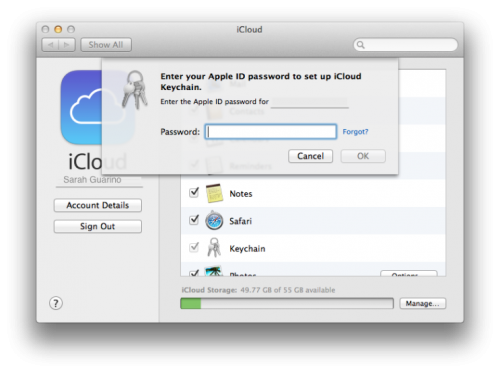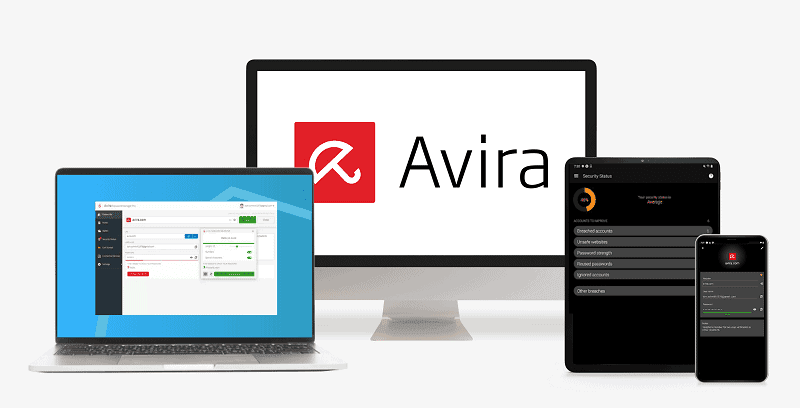

- LOCAL PASSWORD VAULT MAC SERIAL
- LOCAL PASSWORD VAULT MAC VERIFICATION
- LOCAL PASSWORD VAULT MAC CODE
- LOCAL PASSWORD VAULT MAC MAC
LOCAL PASSWORD VAULT MAC SERIAL
Anyway, if you don't get something, you can always ask a question in the comment section.įirst of all, open the Serial Monitor because the ciphertext is printed into the Serial Monitor. I hope I wrote an explanation that's clear enough. In that case, it is a starting point for the counter (in the counter mode), but instead of being a starting point itself, it increments the key by itself! That's the key difference between that case and what IV is supposed to be. Now let me explain why I wrote (in that case) - IV is supposed to be a number that is used as a starting point for the counter. The same principle applies to every section.

It works as follows: iterate the current section until it reaches 255, on the next iteration set the current section equal to zero and increment the next section by one. IV only affects the first sixteen sections of the key. Each section of the AES's key can have a value between 0 and 255. It just works differently - instead of deriving a part of the key from the input string, the initialization vector (in that case) sets the number of iterations of the first sixteen sections of the key. The purpose of the initialization vector is the same as the purpose of the master password. Your house might have the best lock in the world, but what's the point in it if you keep the key from it in an easily accessible place.
LOCAL PASSWORD VAULT MAC VERIFICATION
The verification number must always be the same for the same password. One of the numbers derived from the master password is used as a verification number. After you disconnect power from the device, every modified part of the key will be lost because it's stored in the volatile memory.Īfter the master password is entered, it's hashed with SHA-512, then this hash goes through Serpent 576 times, and after that, the obtained result is used to modify the parts of two AES's keys. You need to enter it every time you're powering up the device. The master password isn't stored in the permanent memory. The master password is used to derive a part of the key. The purpose of the master password is to prevent an attacker from deciphering your notes by simply getting physical access to the device. If you configured IDE correctly, installed drivers, selected the corresponding port, and still keep getting this error: A fatal error occurred: Failed to connect to ESP32: Timed out waiting for packet header. Connect a 10♟ capacitor to the board while flashing.Ĭonnect the positive lead of the capacitor to the EN pin of the ESP32 Ĭonnect the negative lead of the capacitor (usually indicated by the gray stripe) to the GND pin of the ESP32.ĭon't forget to disconnect the capacitor after the board flashes. Unfortunately, that's not the case for all boards. Some boards will flash without any problems.
LOCAL PASSWORD VAULT MAC MAC
The MAC address of this board is EC:94:CB:67:3A:4C If done correctly, you should see the MAC address in the console. Then open the Serial Monitor, and reboot the board.
LOCAL PASSWORD VAULT MAC CODE
To get the MAC address of the ESP32 upload this code into the board. This property applies to both encryption algorithms utilized by this device! That property applies to both ciphers.Īnd by the way, if you give the algorithm the same input more than once, the output will be different every time. If the length of the input block isn't equal to eight, then the padding is applied.Ģ) If the length of an input block isn't equal to eight, then the padding is applied ģ) Input block is passed to the AES alongside 64 random bits Ĥ) AES encrypts obtained 128-bit block using the first key ĥ) The result of the previous step is split into two equal 64-bit halves Ħ) 64 random bits are concatenated to each half ħ) Each of the 128-bit halves is encrypted using Serpent Ĩ) Each ciphertext from the Serpent is encrypted using AES with the second key ĩ) Concatenation of two ciphertexts produced by the AES using the second key is the resulting ciphertext.Įach AES's key is incremented each time after the algorithm uses that key. This algorithm takes eight characters (64 bits) and three keys as an input, generates 192 random bits in the encryption process and produces a sixty-four-character string in the hexadecimal format as an output. It requires three keys to function: two keys for the AES and one key for Serpent.

This device utilizes AES-256 + Serpent + AES-256 encryption algorithm to encrypt and decrypt your passwords.


 0 kommentar(er)
0 kommentar(er)
